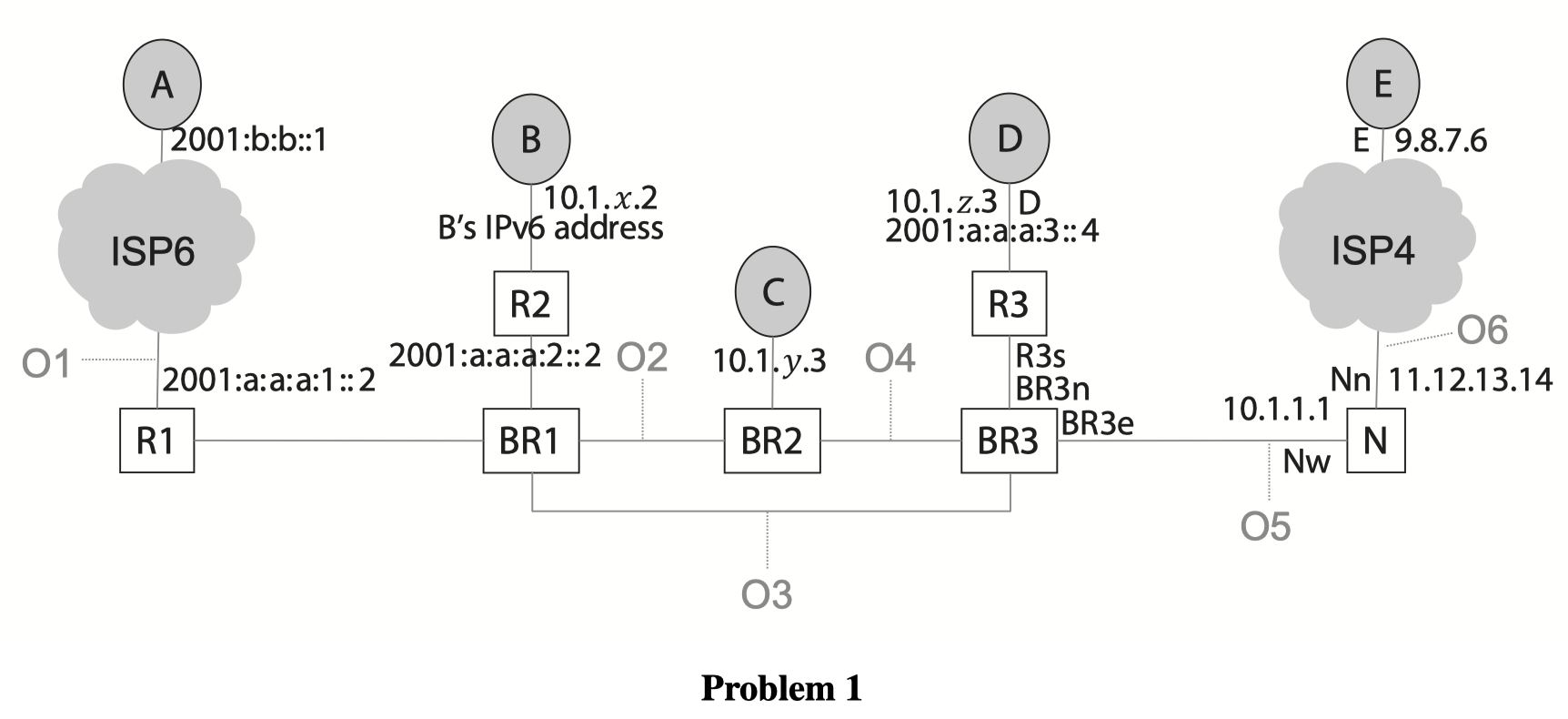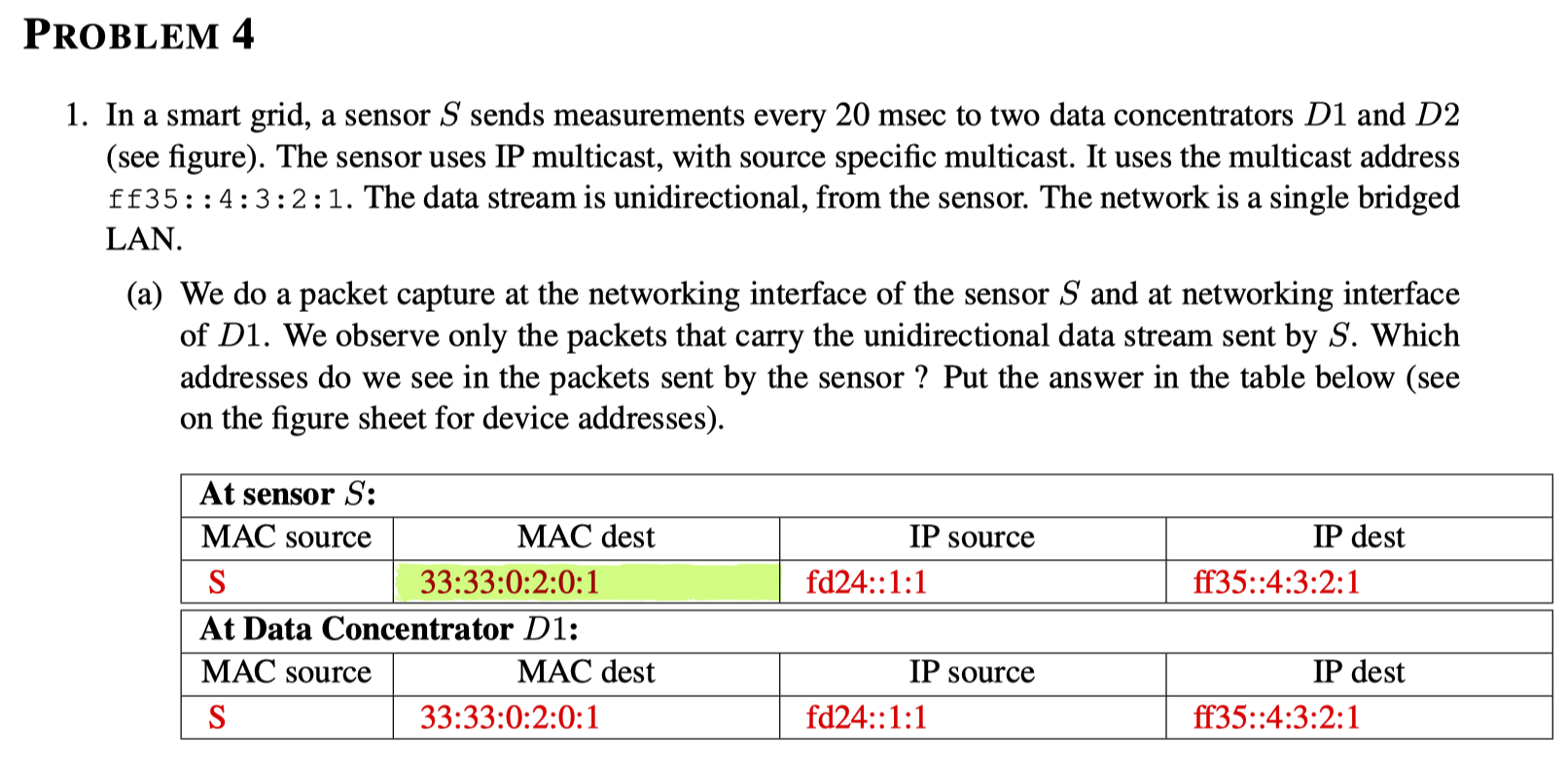Hi there,
I have some questions regarding the 2020 exam solution sheet.
Problem 1

- Is ISP4/ISP6 here indicating a potentially huge network between the host D and the nat N such that BCD are on a local network while A, E are far away?
- questions 1(d) and 2(c): how about the packets with the protocol e.g. TLSv1.3, why do we exclude them?
Problem 3
- Question 5


To me, the \theta will end up being 10^7 *8 \ bits/s and so the final q will become 0.02% rather than 1.5%. Could you kindly point out if I calculated it wrong somewhere?
Problem 4


- Question 1 (a)
I wonder why S and D1 would observe the packet with the same MAC source and destination. i.e. Does the bridged network indicate that only bridge/switches are in between and no router is involved?
Moreover, could you kindly explain where 33:33:0:2:0:1 comes from? I wasn't able to find it explicitly mentioned in the question or the graph.
Thanks a lot for reading my lengthy post!Best,
Yiren